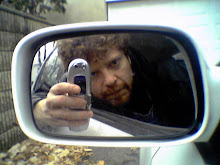
Pat Broderick is more than
disenchanted with the Greenwich Village Halloween parade that comics conventions
have become in recent years. He says the skin show costs artists like himself money.
So he’s doing something about it.
“A few years ago I returned to a wider comic
convention circuit,” Pat told me. “I’ve been doing commissions for many clients and have a
backlog. Recently I was also fortunate to receive work from DC Comics, and I
have
my own properties, which I’ve been working on for the last two years. So there’s no
lack of work now and I find myself in a happy position for an aged artist.”
Aged artist? The proper term is veteran. Take a gander at
the Werehawk pin-up Pat recently contributed to Aardwolf Publishing’s forthcoming
Dave Cockrum’s FUTURIANS RETURN project. But I digress…
“This last year,” said Pat, “I reviewed the years’ convention
appearances and came to a sobering conclusion. Conventions had veered away
from the family-friendly events they once were into major media events
with large cosplay involvement. At first I thought the
mega increase in attendance would also bolster sales with [artists and] dealers.
Sadly it has not.”
Pat says promoters are all about maximizing advanced
ticket sales, which leads to more people at a show, but the wrong type of people: unqualified guests. People who want to see and be
seen aren’t at shows to
spend money.
 |
| Pat's contribution to Dave Cockrum's FUTURIANS RETURN |
“From a promoter’s
point of view, it’s a great day,” says Pat. “Sadly it’s not so great for artists and dealers.”
So Pat bailed on an appearance in Ft. Lauderdale. “I'd
been working with this promoter for about a year and every time I’d inquire why
artists weren’t getting the same promotional efforts channeled towards cosplay
events. And I was told that the artists were.
Sadly this just did not prove to be the case.”
The next day, when Pat logged onto Facebook, he found numerous “friend” requests from cosplayers. So he requested that cosplayers
cease “friending” him. He also asked convention promoters not to invite him
if they were building their shows around cosplay events and media guests. “It
was a simple request,” he says.
By the following day, Pat’s announcement had gone viral. It
even was picked up by The Atlantic. “The
amount of hate mail was huge,” says Pat. “The amount of support was even
larger.”
Pat believes the inclusion of cosplay as a main
convention function adds no value to the shows beyond padding attendance. Not only doesn’t
it translate into sales, it does the opposite.
“Cosplayers work their way around convention floors and impede
the natural flow of traffic as they stop and pose for photos. They don’t care that
they're blocking people from selling their wares. These roaming groups of
costumed players shut down a convention floor.”
And what of the notion that cosplayers are creating or participating in a form
of art? “They’re not,” says Pat emphatically. “If they had created the designs
from scratch and they were truly uniquely theirs, then that argument could be made.
But they don’t do anything original.”
 |
| You're so busy looking at me that you can't even read this article. |
So what are cosplayers good for? Nothing, apparently. “They
rarely spend much if any cash except on their costumes,” says Pat. “It’s just
gotten out of hand and these show [promoters] are forgetting that it’s their
obligation to make it a profitable event for
everyone.
Pat is considering creating a different kind of comics convention. “A decision was
made about three months ago to produce my own shows and an attorney was
contacted. Backers have been approached and are interested. Structure is being
put into place. Names are being bounced back and forth. Eventually we’ll host
our first show.”
Of course Pat’s position has not come without a cost. “I've been banned for life from attending four Florida shows by one
promoter,” he reports. “But that’s okay. I’d rather be dropped ahead of time
than attend another bad show.”
























